Social History. This is not the preserve of stuffy academics with difficult to read papers.
No. Social history is concerned with experience rather than action. The job of the social historian is to provide a general understanding, not at the level of ‘society as a whole’, but at the level of the individual or the members of particular social groups.
In the words of Neil from the mid 1980’s sit-com The Young Ones, “heavy”. Well, not really. I give you a jam sandwich, registration number C356 YST.
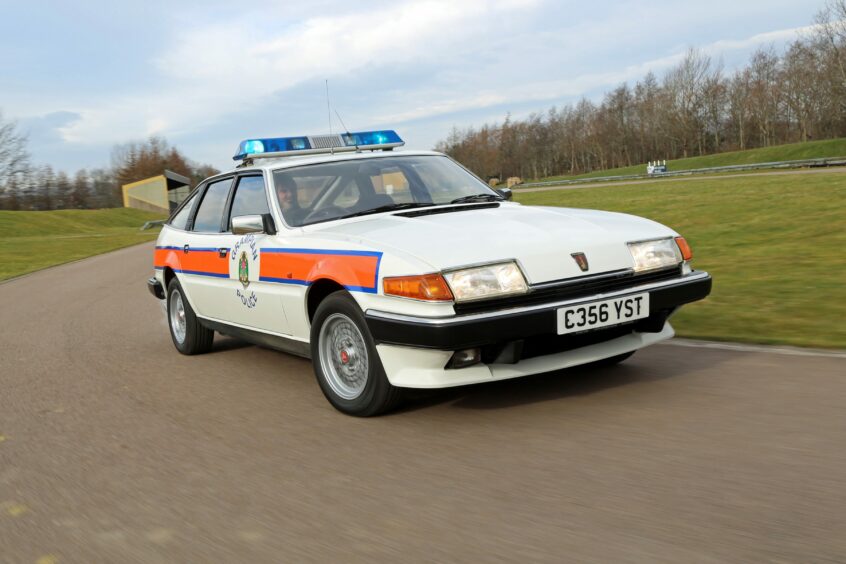
Its historical significance comes from being required, in a time when I was a young one, the mid-eighties, to control a particular social group… people speeding on the newly constructed racetrack called the Stonehaven bypass.
The year 1985, just after the second series of The Young Ones aired, was, arguably, a golden era in motoring.
No average speed cameras, less crowded roads, but – most importantly – an era when great sporting cars came to the masses.
John Clark had arrived in Aberdeen and was selling the superb and technically advanced 3 series and 5 series cars.
Bob Shepherd at Station Garage Torphins was scouring the country for used high performance cars, and in Inverurie our friend Jim Stevenson was not only selling fast Fords, but also Lotus cars.
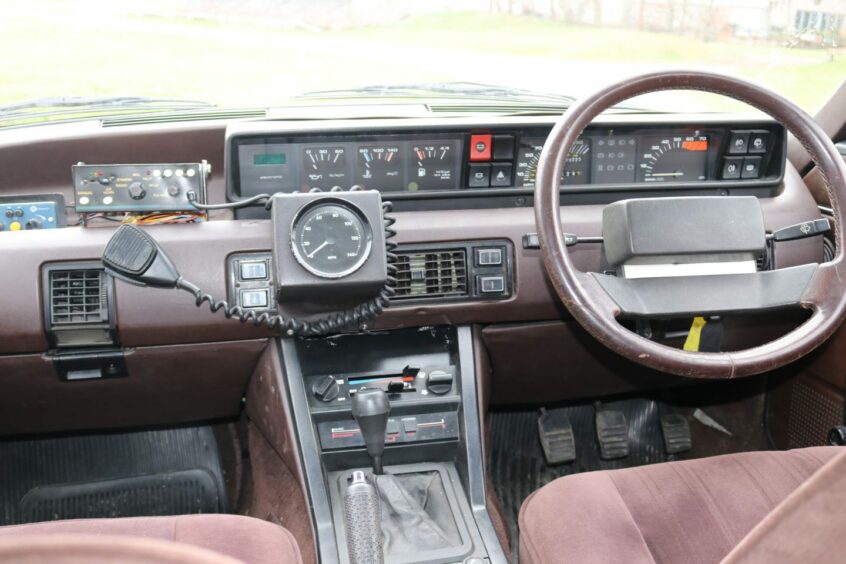
Most of my chums, being Thatcher’s children, were wasting money on sports cars (my brother and I both had Capri Injections).
Police Scotland – or Grampian Police – needed something to deal with this speeding menace, a vehicle that could catch these bad boys and girls on the new bypass.
So, Grampian Police ordered a Rover SD1, a fuel injected version of the venerable 3500 V8, in Police specification.
This meant no luxury items like: electric windows, sunroof, trip computer, sounds, air conditioning or cruise control (this made the car both lighter and easier to maintain).
You couldn’t relax until you saw it going the other way
Of course, it was delivered with a five-speed manual gearbox and featured useful enhancements like: improved suspension, heavy duty clutch, Jaguar 4-pot brakes, and disco lights on the roof rack area.
All of which was needed, as this car has seen 140mph on the big accurate Police speedometer in the centre of the dashboard.
Wearing dual Rover badges on the tailgate (losing the “Vitesse” badge as seen on civilian specification cars), on 10th December 1985 C356 YST took up station on the Stonehaven bypass and went to work.
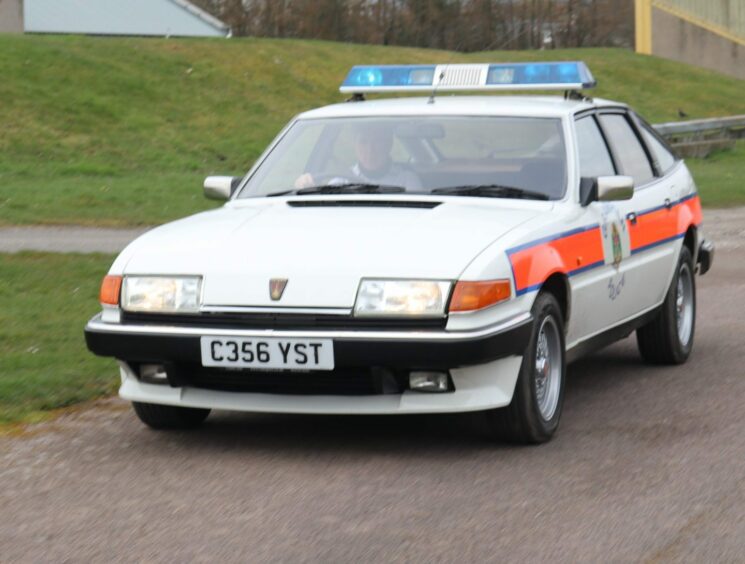
Those who were enjoying the new road too much remember it well. I’ve been told that it suddenly appeared in your mirrors, resulting in points on your licence, or, for many, a three-month ban.
The car became a talking point among motorists, with one being quoted as saying “You couldn’t relax until you saw it going the other way”.
Grampian Police ran the car until 20th July 1988, being sold at auction after a hard life that included three back axles and several crashes.
Now, some 37 years later, how does this historically significant Rover drive? It still looks modern, with the Ferrari Daytona cues, but once inside you realise that Rover in the 1980s had adopted Ferrari build quality, too!
Sitting behind the big steering wheel this feels a big car. Yes, the interior feels basic and worn out but, remember, when new this was a cheap high-performance five door hatchback that has since lived a tough life.
Police specs with sharp handling and strong brakes
I expected it to be quicker, but in reality, the vague gearbox and my inability to treat the car with the brutality it has been used to meant I wasn’t getting the best out of the engine.
On the move, though, it inspires confidence with sharp handling and strong brakes; that’s the police specification still working as it should.
The car is as important as any other historically significant artefact telling a social history story
This was not a technically advanced car at launch, and it’s certainly not a show car now. But C356 YST is very much part of a shared social history.
It does provide a touchstone to a particular time in regional transport development, and how elements in that society were dealing with the changes.
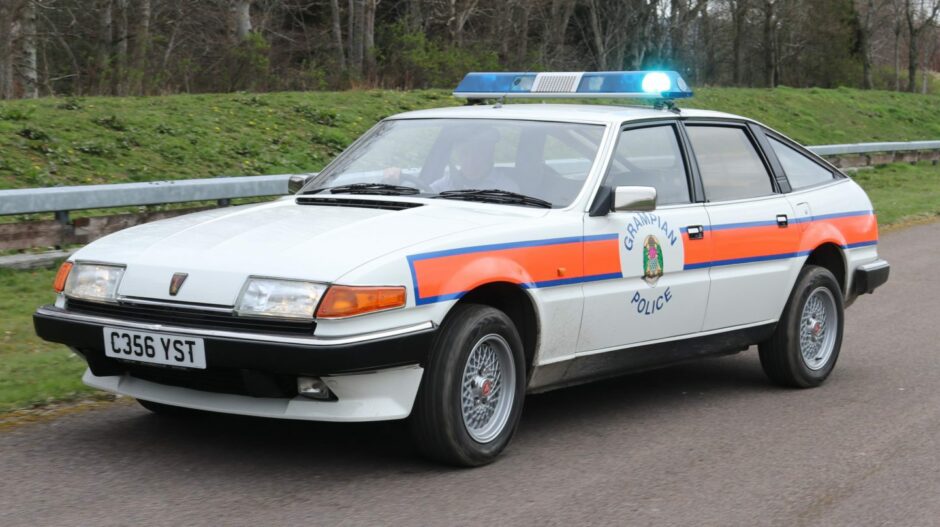
The jam sandwich (a police car with the red “jam” layer of paint between two white parts) re-connects us with the mid-1980’s motoring folklore, and, for me, the car is as important as any other historically significant artefact telling a social history story.
Thankfully the team at Grampian Transport Museum (GTM) felt the same. After being rescued by Philip Glenister (Life on Mars) and Ant Anstead (Wheeler Dealers) for the Channel 4 TV programme “For the love of Cars”, it was restored, in a hurry for filming, then sold at a televised auction on 10th January 2015 … to GTM.
And GTM has been able to re-unite the car with its police driver, a man called Ian, who can still drive the car in the spirited manner he did back in the day!
Police traffic officer and car reunited
When the Rover returned to GTM in 2015, Ian and his son were there for the star car arriving home.
As a six-year-old child Ian’s son was so very proud of his dad’s company car. For both this was an emotional meeting with an influential old friend, as the now grown up six-year-old child was able, at long last, to drive C356 YST.
Over the years GTM has invested in and improved the Rover, and it’s currently on display.
Which means we can all connect with this piece of social history. Build this into your next visit to GTM at EV Expo on June 19 (showcasing electric vehicles) or AllFord at Alford, with commentary from me, on August 21.
GTM is also planning exciting stuff for over the Jubilee weekend so check the website for more information.
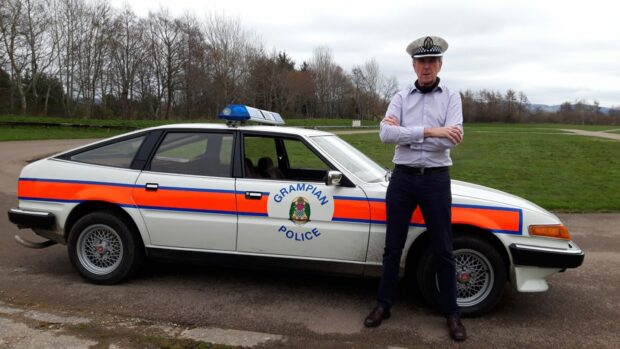
Conversation